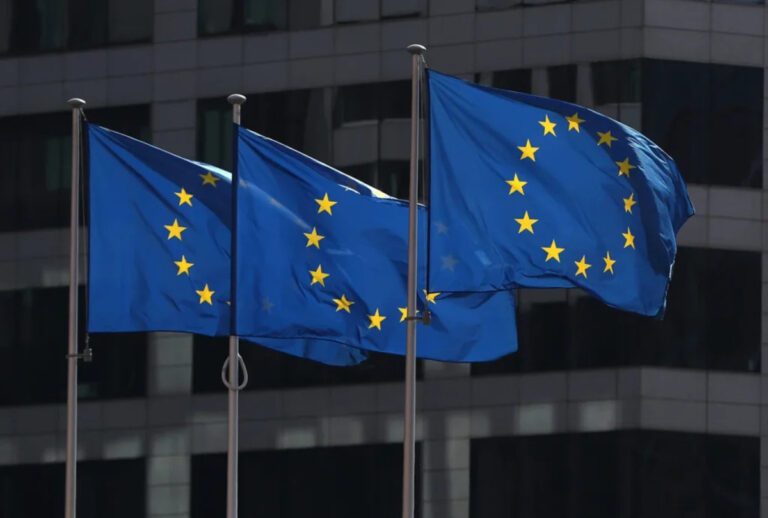🎧 Listen to This Article
BRUSSELS – The European Union is preparing to impose targeted retaliatory tariffs on up to $28 billion of U.S. goods, directly responding to President Donald Trump’s steel and aluminium tariffs.
Set for approval by EU leaders later this week, the proposed countermeasures aim to defend EU industries against what it calls “damaging and unjustified” U.S. tariffs. The EU’s retaliatory actions come amid fears of escalating trade tensions that could send shockwaves through the global economy.
“Given the uncertainty in the trade relations with the U.S., we are prepared to act decisively,” said EU Commission President Ursula von der Leyen. These counter-tariffs would apply to U.S. products ranging from dental floss and meat to luxury goods like diamonds and wine.
Tariffs and Trade Disputes: A Growing Threat to Global Stability
The EU’s move to impose retaliatory tariffs follows Trump’s announcement that U.S. tariffs would cover 25% on steel and aluminium, and 20% on other goods, with the potential for further measures on products like copper, pharmaceuticals, and timber.
This would affect nearly 70% of EU exports to the United States, which were valued at $585 billion last year, with goods like meat, cereals, wood, and clothing on the tariff list.
Key details about the EU’s retaliatory measures include:
- 50% tariff on U.S. bourbon, causing significant friction with U.S. trade officials
- 25% tariff on various U.S. agricultural and manufactured goods
- Additional duties on pharmaceuticals, semiconductors, and timber
These tariffs aim to strike back at U.S. sectors directly impacted by Trump’s protectionist stance while keeping the door open for negotiations should the U.S. reconsider its position.
Divisions Within the EU: A Delicate Balance
The EU’s unified response to the U.S. tariffs has been complicated by differing opinions among member states. While some countries, like France, advocate for a strong, all-encompassing package that includes suspending investments in the U.S., others, like Ireland, are calling for a more measured response to avoid escalating tensions further.
“It’s a difficult balance,” one EU diplomat stated. “We need to be firm enough to compel the U.S. to negotiate, but not too harsh to avoid a full-blown trade war.”
The EU is looking to present a united front, as a fragmented response could weaken its negotiating position. Talks between EU officials and U.S. counterparts have so far yielded little progress, with EU Trade Chief Maros Sefcovic calling his latest meeting with U.S. officials “frank” but unproductive.
What’s Next?
EU leaders are set to vote on the initial round of counter-tariffs on Wednesday, with the full package likely to be implemented in two stages, starting April 15. A qualified majority of 15 EU countries, representing 65% of the EU’s population, is required for approval.
In the coming days, Ursula von der Leyen will meet with CEOs from major sectors like steel, automotive, and pharmaceuticals to discuss how these tariffs will affect their industries and determine next steps for mitigating the economic impact.
Global Implications: Can a Trade War Be Averted?
As the EU joins China and Canada in retaliating against U.S. tariffs, the risk of a broader global trade war increases. Economists warn that continued tariff escalations could lead to higher consumer prices, disrupted supply chains, and slower economic growth worldwide.
For multinational businesses, the rising threat of tariffs and countermeasures presents a need for recalibrating strategies, particularly in supply chain management, tax planning, and market diversification.
For further details, clarification, contributions, or any concerns regarding this article, please contact us at editorial@tax.news. We value your feedback and are committed to providing accurate and timely information. Please note that our privacy policy will handle all inquiries



